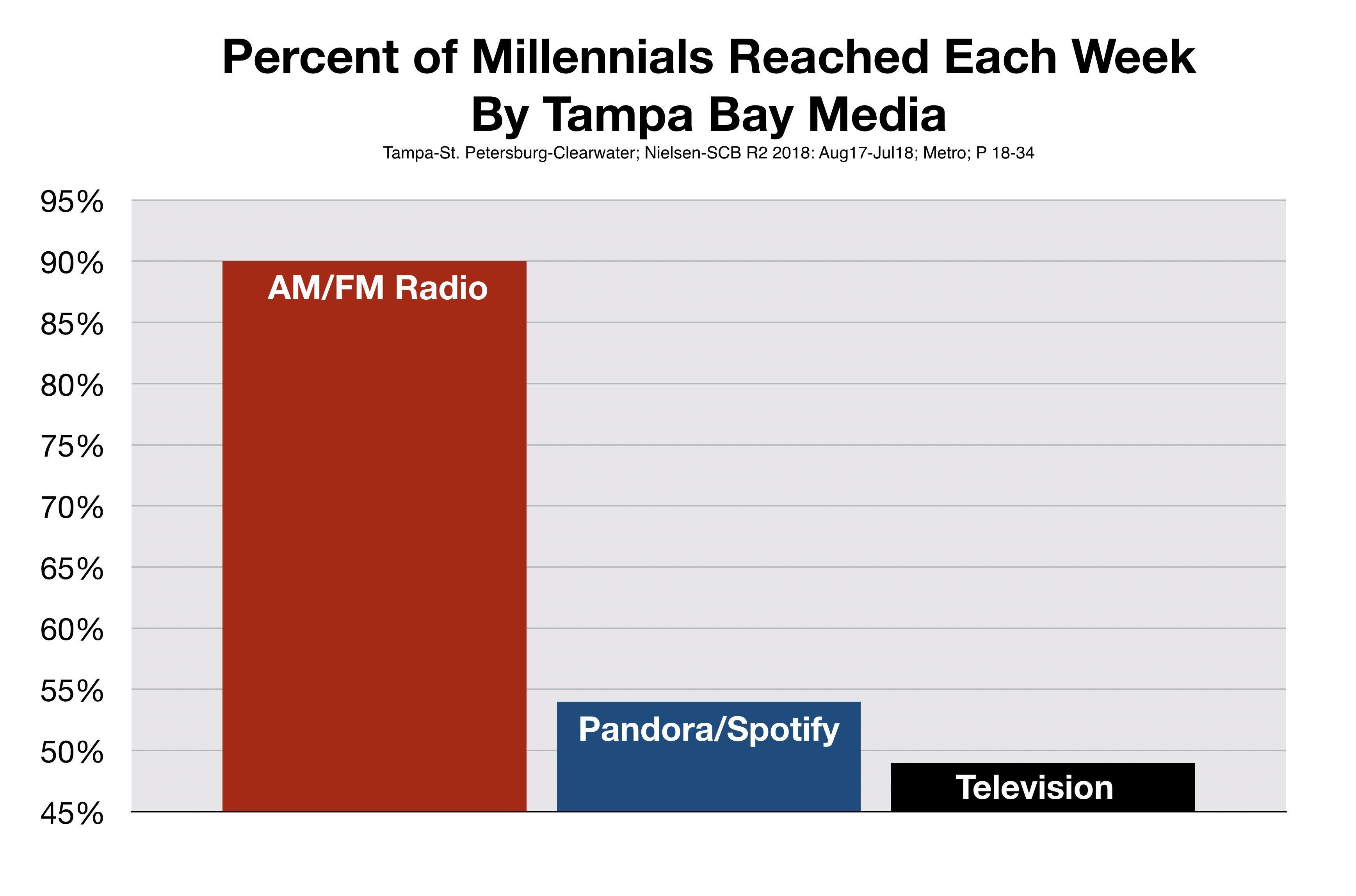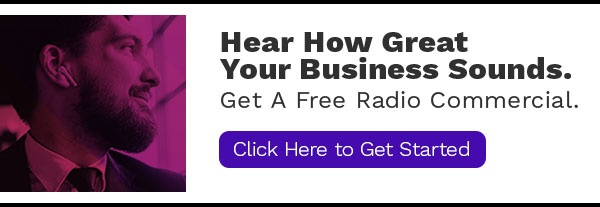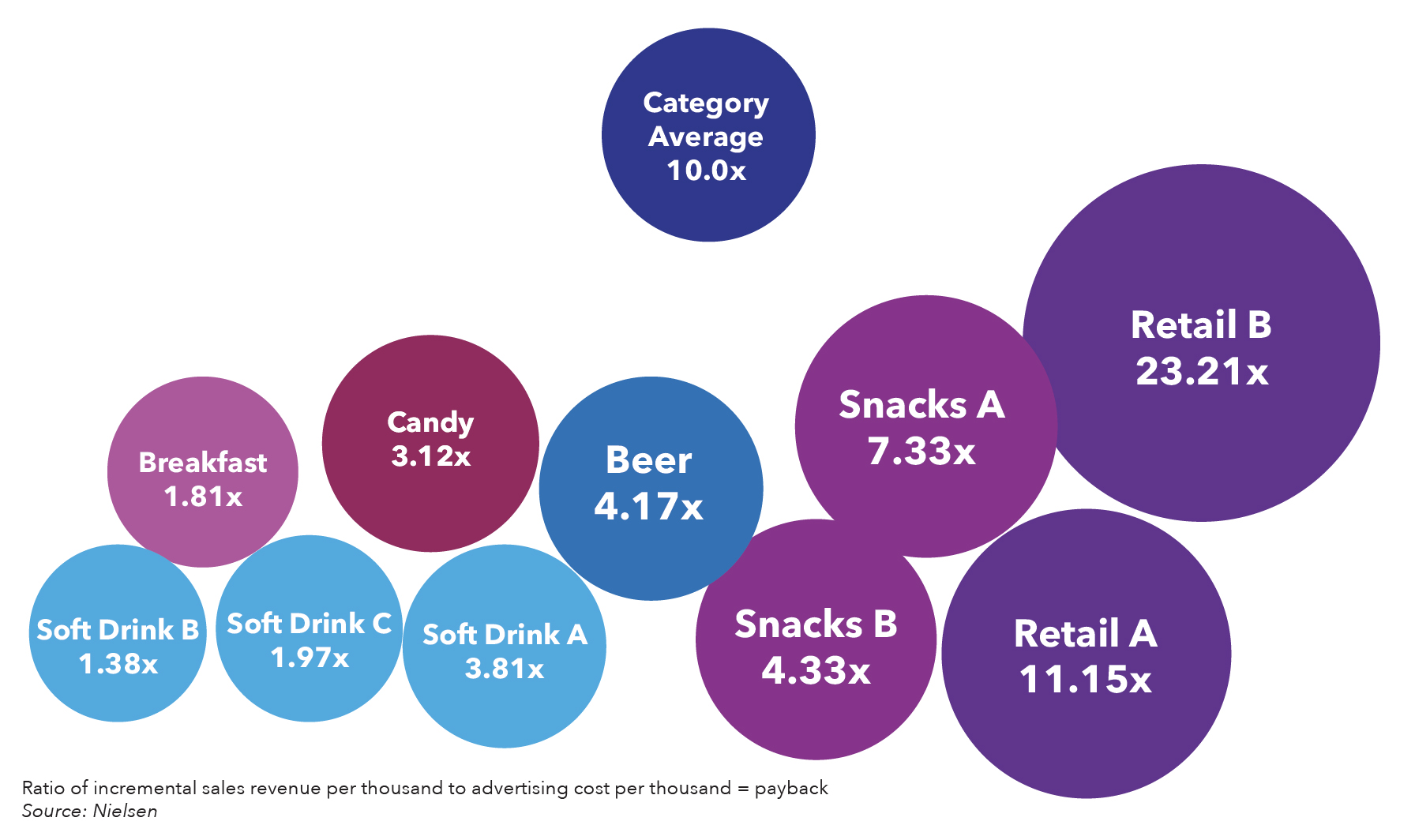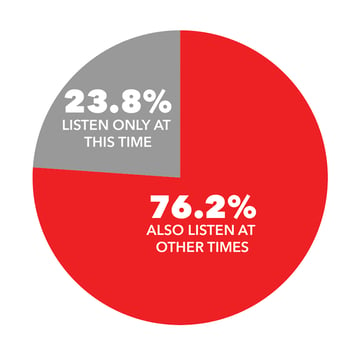 Let's set the record straight. You can't see the Great Wall of China from the moon. Your fingernails don't keep growing when you're dead. Shaving does not make hair grow back quicker or thicker. Chicken soup will not cure a cold. And a penny dropped from the top of the Empire State Building cannot kill a pedestrian below.
Let's set the record straight. You can't see the Great Wall of China from the moon. Your fingernails don't keep growing when you're dead. Shaving does not make hair grow back quicker or thicker. Chicken soup will not cure a cold. And a penny dropped from the top of the Empire State Building cannot kill a pedestrian below.
Don't believe me? Just ask Google.
Like the factoids above, there are also things that many Tampa Bay small business owners think they know about advertising on Tampa radio stations that just aren't true.
Here are the five most common misconceptions that business owners have about Tampa radio followed by the facts.
1. Nobody Listens to The Radio Anymore. Media expert Doug Schoen wrote in Forbes, "You wouldn’t know it from all the media coverage focused on streaming video and streaming music, but recent Nielsen data shows radio actually has the most reach among American media consumers. 93% of adults listen to the radio each week as compared to 87% who watch TV, a substantive difference."
Last week in the Tampa Bay area, for instance, almost 2.2 millions consumers tuned-in to their favorite radio stations. This is significantly more than watched a local TV station, read a local newspaper, or logged-on to a streaming media site like Pandora or Spotify.
Radio's massive reach among consumers led Deloitte, the world's largest business consulting firm, to recommend that "radio should be a big part of the mix for those buying advertising."
 Tampa Bay real estate agents Angela and Andrew Duncan, also known as the 'Duncan Duo', have benefited from Tampa radio's massive reach among local consumers.
Tampa Bay real estate agents Angela and Andrew Duncan, also known as the 'Duncan Duo', have benefited from Tampa radio's massive reach among local consumers.
"When we first started advertising on Tampa radio, our growth trajectory really took off," says Mr. Duncan. "We had been selling 100 homes a year. But when we invested in radio advertising, our sales began growing by 50% every year."
"This year we will sell 1000 homes resulting in $250,000,000 in volume. We know that every $1.00 we invest in advertising on Tampa radio stations will return $5.00 in sales. This is a tremendous ROI when we are competing with 10,000 other local real estate agents."
The Duncan's attribute the success of their advertising on Tampa radio to the medium's ability to reach their target demographic.
2. Millennials Don't Listen To The Radio. Despite a proclivity for all things digital, 95% of millennials tune-in to Tampa radio stations each week. This is substantially more than watch local TV or visit streaming audio sites such as Pandora or Spotify.
To be clear, millennials aren't just casual radio listeners. They spend almost two hours per day, every day, glued to their favorite Tampa radio stations. Most importantly for local small business owners, millennials respond to radio advertising.
Recently, IPSOS, a global research company examined how radio advertising affected Amazon's sales during the 36 hours of Amazon Prime Day.
Where radio really delivered for Amazon was among millennials. Thirty-eight percent of this audience that was aware of Prime Day ads on the radio made a purchase during the event. Radio's ability to deliver customers among this age group was 18.7% better than online ads and a whopping 22.5% better than TV ads.
3. Radio Commercial Needs To Be Heard 3 Times To Be Effective. This myth has its roots in 1890 when Herman Ebbinghaus, a German psychologist, conducted a series of memory experiments.
Dr, Ebbinghaus studied how many rehearsals were necessary for his test subjects to memorize a list of nonsense syllables. Three seemed to be the magic number.
Flash forward to the mid-1960s. Dr. Herman Krugaman, a public opinion researcher at General Electric, was asked to develop a model for effective advertising frequency.
Based on the works of Dr. Ebbinghaus, Dr. Krugaman determined that for a commercial to be effective, it must attain three and only three, levels of psychological exposure among the target audience. Quickly, however, Krugman's model was misinterpreted by media buyers to suggest three media exposures were necessary to produce advertising results.
Krugman himself was dismissive of the "three exposure rule" propagated by the media buying community. He said, "There is a myth in the advertising world that viewers will forget your message if you don't repeat your advertising often enough. It is this myth that supports many large advertising expenditures...I would rather say the public comes closer to forgetting nothing they have seen [or heard]. They just put it out of their minds until and unless it has some use . . . and [then] the response to the commercial continues."
If three is not right, then how many times do consumers need to be exposed to before they make a purchase? Erwin Ephron, often considered to be the father of modern media planning, told Inside Media magazine, "Today serious students of advertising understand there is no formula answer to the effective frequency question. They believe most exposures are reminders so a single exposure, if relevant, can make the sale.”
A study conducted by Nielsen, confirms Mr. Ephron's advice. The study indicated that, in fact, a single exposure to a radio commercial could generate an increase in sales. The study goes on to demonstrate, however, that higher levels of frequency will create an exponentially greater lift to sales. The greatest lift came when consumers were exposed 7-plus times to an advertiser's message.
Bottom line: there is no science to support the three-frequency rule. The evidence indicates the more frequency...the better.
 Michael Hollander, who, along with his family, owns Weather Tite windows in Tampa. He has learned that higher levels of frequency drives sales.
Michael Hollander, who, along with his family, owns Weather Tite windows in Tampa. He has learned that higher levels of frequency drives sales.
"On Tampa Bay radio, I discovered, I could affordably purchase enough frequency to really have our brand sink into our target customers' heads," Mr. Hollander says.
"Advertising on Tampa Bay radio has been a huge part of the company's success. Ninety-two percent of our leads say radio is the way they heard about us. The leads we generate from our radio ads cost us $4.00 each. That's almost half of what I pay for leads from other sources."
According to this in-depth lead tracking process, Mr. Hollander knows for every $1 he invests in radio advertising, he gets a $21 return on investment.
4. Internet Advertising Provides Greater ROI Than Radio. Nielsen has conducted more than 20 studies on what type of return-on-investment a business can expect from its radio advertising. AdAge magazine describes the results of this research as "eye-popping".
The most recent Nielsen study revealed that a radio advertising campaign conducted by an auto-aftermarket retailer generated $21.00 of incremental sales for every $1.00 invested. On average, the results of all these studies indicate a 10-time return on investment.
According to AdAge, these findings indicate that advertisers can expect higher returns on investment from radio than TV, digital, or social media.
 Jon Polizzi has owned Electric Today, LLC in Tampa with his dad and brother since 2004. The company provides residential electrical and air conditioning repairs to customers in Hillsborough, Pinellas, and Manatee counties.
Jon Polizzi has owned Electric Today, LLC in Tampa with his dad and brother since 2004. The company provides residential electrical and air conditioning repairs to customers in Hillsborough, Pinellas, and Manatee counties.
The company began advertising consistently on Tampa Radio stations in 2017. "Since then," says Mr. Polizzi, "our return on investment has been really good."
"Last year," he says, "our business grew 67%. The only thing we did differently was to add radio advertising into our marketing mix. I attribute most of our growth to what we have done on the radio."
5. People Only Listen To Radio During Drive Times. Tampa Radio stations broadcast 24 hours a day for a reason: people listen all day, every day.
The chart below from Nielsen indicates that although listening to Tampa radio peaks between 6:00am and 7:00pm on weekdays, there is a significant audience after dark, overnights, and on weekends.

During peak times, the demand to purchase commercials is greater than the supply. This, then, drives up the cost of advertising during those periods. Because of this, some Tampa Bay small business owners believe they can't afford radio commercials.
For businesses with limited advertising budgets, using fewer ads during peak times and placing more commercials during the lower demand times can prove to be both effective and more cost-efficient. This is because almost 8 out of 10 consumers who tune-in to Tampa radio during peak times also listen during non-peak times.
People Who Listen To Tampa Bay Radio Mon-Fri/6:00am-7:00pm
After considering facts similar to the ones posted here, Mr. Schoen ended his article in Forbes with the following observation:
"The implications of results like these are profound for the communications and advertising industries and as a marketing professional with over 35 years of experience, I found this data nothing short of fascinating. It’s quite clear that we should all be paying more attention to radio, its reach and potential to help our businesses. It’s doing the job with expert efficiency."









